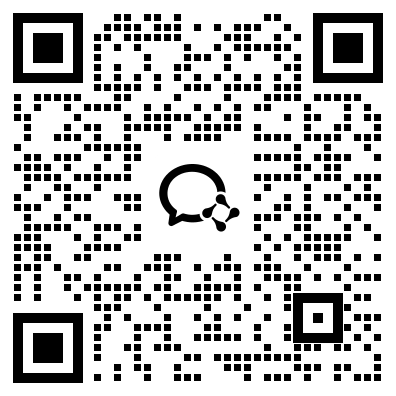自考“高级英语”学习指导(9)
例如2001年的试题:
Read the following passage carefully and translate the following sentences
The Birth of Computing: The Forgotten Father Figure
1) It seems curious that Charles Babbage is remembered today as the grandfather of computing, for Babbage never completed a single one of his clunky mechanical calculating machines, and his work was largely forgotten after his death in 1871. It was only with the construction of the first electronic computers in the 1940s, by people who were unaware of Babbage‘s work, that the groundbreaking nature of that work became apparent. Had Babbage never lived, in other words, the rise of the computer would have happened anyway. That is because today’s computers owe their ancestry not to Babbage but to the work of another 19th-century pioneer, Hermann Hollerith.
2) In contrast to Babbage, who wanted to automate the business of mathematical calculation, Hollerith was interested the field of date processing. Babbage intended his elaborate“calculating engines”to be used by scientists, in much the same way that specialist supercomputers are today. The particular application he had in mind was the production of error-free mathematical and astronomical tables. Hollerith, on the other hand, made his name building machines to handle an enormous data-processing task: the analysis of the results of the United States‘ census.
3) When the first American census took place in 1790, tabulating the date it collected took nine months. As the country‘s population grew larger, however, and the number of questions asked in each census increased, a problem of delay gradually emerged. The results of the 1880 census took seven years to compile—making them out of date by the time they were published.
4) This was unsatisfactory because, for example, seats in the House of Representatives were (and are) assigned according to census data. It became apparent that a new way would have to be found to compile the results of the 1890 census, in order to keep up with rapid demographic changes. Indeed, without a new approach the 1900 census would already have been under way by the time the 1890 results became available.
5) Hollerith, a former employee of the Census Bureau, had the idea of building a tabulating machine. His first design, patented in 1884, used a long strip of paper into which holes were punched to represent information, The record for each person was to be punched across the strip, which would then be run through the machines. Electrical contacts made through the holes in the strip would drive electro-mechanical counters. In this way the number of records matching particular criteria could be counted.
6) Before long, Hollerith improved this scheme, by using combinations of holes to represent more complex pieces of information. At the same time, he switched from a paper strip to punched cards, By clever wiring of the tabulating machine, it was possible to count the number of cards with particular combinations of attributes.
7) Hollerith also invented a sorting machine, to facilitate the tabulation of subsets of the population. When a card was inserted into the tabulating machines, the counters would be updated accordingly, and the appropriate drawer in the sorting machine would open.
8) When it came to choosing a tabulating machine for the 1890 census, Hollerith‘s design was one of three contenders. The other two machines used colour-coded slips of paper and chips of wood to represent information. In a competition between them it took 72 hours to record all the data on to Hollerith’s punched cards, which was not vastly faster than the 144 hours and 100 hours taken by the other two machines.
9) The real advantage of Hollerith‘s system became clear, however, when it came to manipulating the stored date and compiling the results. Hollerith’s machines took less than six hours; the other machines took 55 and 44 hours respectively. His design was chosen, and his machines compiled the results of the 1890 census in a mere six weeks, at a saving to the Census Bureau of $5million in staff costs—ten times more than expected.
10) This success enabled Hollerith to expand his Tabulating Machine Company into overseas markets. In 1911, the company merged with two others, and in 1924 the new firm changed its name to International Business Machine—now better known as IBM. There is, in other words, a direct line from Hollerith‘s tabulating machines to mainframe computers and, in 1981, to the first IBM PC.
11) It is ironic that today‘s computer industry has its origins in a date-processing project carried out in 1890 that was completed on time and under budget, Modern computerisation projects, in contrast, tend to have far more in common with Babbage’s ill-fated attempt to build a mechanical computer, which cost a fortune and was eventually abandoned. Perhaps the fact that Hollerith is forgotten, while Babbage is remembered, should not be surprising at all.
tabulate: 制表
Now, translate the following sentences into Chinese:
1. Babbage intended his elaborate故“calculating engines” to be used by scientists, in much the same way specialist supercomputers are today. (in paragraph 2)
2.His first design, patented in 1884, used a long strip of paper into which holes were punched to represent information. (in paragraph 5)
3. At the same time, he switched from a strip to punched cards. (in paragraph 6)
4. The other two machines used colour-coded slips of paper and chips of wood to represent information. (in paragraph 8)
5. This success enabled Hollerith to expand his Tabulating Machine Company into overseas markets. (in paragraph 10)
参考译文:
1、 拜倍格打算把他精心设计的“计算机”(用于计算的机器)提供给科学家使用,使用方式差不多就象现在专家使用的超级计算机一样。
2、 他的第一次设计在1884年获得专利,是在一条长长的纸条上打孔来表达信息。
3、 同时,他从使用长纸条改为使用打孔的卡片。
4、 另外两台机器使用含有彩色代码的纸片和木片来表达信息。
5、 这一成功使赫勒瑞斯能够把他的制表机公司的业务扩展到海外市场。












